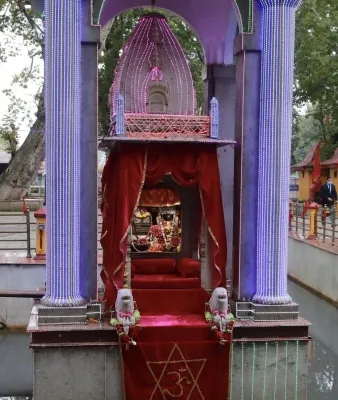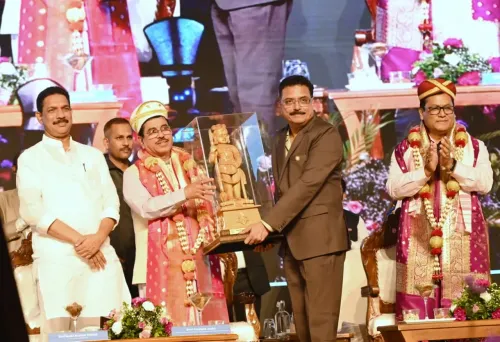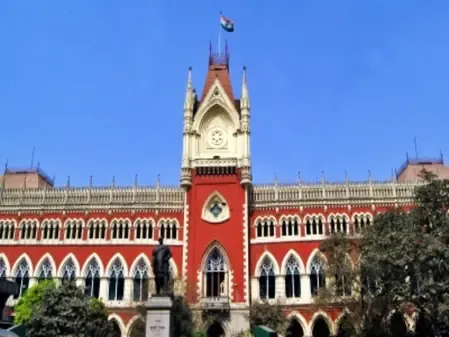Why Do Hundreds of Kashmiri Pandits Gather at Mata Kheer Bhawani Temple for the Annual Mela?

Synopsis
Key Takeaways
- Hundreds of Kashmiri Pandits gather annually at Mata Kheer Bhawani temple.
- The temple is dedicated to Goddess Ragnya, believed to be the reincarnation of Goddess Durga.
- Spring water color is seen as an omen for the future.
- Local Muslims show support by offering milk during the festival.
- The festival represents resilience and cultural identity.
Srinagar, May 3 (NationPress) In a remarkable show of faith, hundreds of Kashmiri Pandits from various regions of India converged on Tuesday in Tullamulla town of Jammu and Kashmir, where the revered temple shrine of Mata Kheer Bhawani is located, just 27 km from Srinagar city in Ganderbal district.
The shrine, commonly referred to as the Mata Kheer Bhawani temple, is dedicated to Goddess Ragnya, who is believed to be the reincarnation of Goddess Durga.
According to legend, the King of Lanka, Ravana, was a fervent follower of Mata Ragnya. However, displeased with his way of life, the Goddess commanded Hanuman to relocate her shrine to a distant place.
This led to the establishment of the temple shrine in Tullamulla. The sacred sanctum is situated in the middle of a holy spring, which the Kashmiri Pandit community holds in high regard.
The spring's water color at the deity's site is believed to predict future happenings. A pink or milky hue is considered auspicious, while black indicates misfortune. Local elders recount that in 1947, when Pakistani tribal raiders invaded Kashmir, the spring water turned black.
Every year on Zyestha Ashtami, the annual festival honoring the Goddess is celebrated at the Tullamulla temple. Devotees prepare and serve 'Kheer' (a sweet dish made from boiling milk, sugar, and rice) during the festivities, which is how the temple gets its name, Mata Kheer Bhawani.
Following the exodus of the local Pandit community due to escalating violence, displaced Kashmiri Pandits have resettled in various parts of the country. Nevertheless, they return to pay homage at the temple during the annual celebration.
Throughout the night, devotees engage in prayers at the shrine, seeking the blessings of their esteemed deity.
Authorities have implemented extensive arrangements for security, sanitation, healthcare, and public assistance at the temple. A heavy presence of police and security personnel has been deployed along the routes taken by devotees to reach Tullamulla.
Expressing their unwavering devotion to the Goddess and deep affection for their homeland, Mahraj Krishen Bhat, aged 65, stated, “No matter where a Kashmiri Pandit resides, our roots are in Kashmir, and Mata Kheer Bhawani is our guardian and guide.”
Another devotee, Sarla Razdan, aged 52, commented, “We will eventually return to our homeland, whether it be tomorrow or later. We don’t require political guidance for this; our community has endured migration, and we will also achieve return and rehabilitation. Being away from our ancestral land is painful, but we believe that brighter days are ahead, and the historical camaraderie that Kashmir is known for will ultimately prevail over violence and distrust.”
Despite the passage of over 35 years since the Kashmiri Pandit community's migration from the Valley, the Muslim residents of Tullamulla have consistently offered milk in earthen pots at each annual festival to welcome the Pandit devotees.









